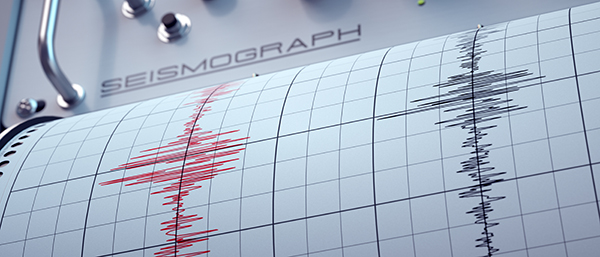Results 1 to 1 of 1
Thread Information
Users Browsing this Thread
There are currently 1 users browsing this thread. (0 members and 1 guests)
-
02-12-2024, 02:03 AM #1
Historic rains and flooding push California fault lines toward the “Big One”
Historic rains and flooding push California fault lines toward the “Big One”
02/09/2024 // Ethan Huff // 5.3K Views
Tags: big government, California, chaos, Collapse, disaster, earthquake, Ecology, environment, fault lines, Flooding, national security, natural disaster, panic, rain, SHTF, storm, the big one, weather terrorism

Geophysicists are voicing their concerns about the impact of southern California's recent week-long storm deluge on the Golden State's fragile earthquake fault lines.
The trillions of gallons of water that dumped on the southland are putting incredible weight on the San Andreas and other SoCal fault lines, which are massively overdue for the so-called "Big One."
"Water is very heavy," writes Michael from End of the American Dream. "If you doubt this, just try lugging a couple of gallons of water around with you for a while."
"Now trillions of gallons of rain have poured down on California, and all of that added weight is going to put additional stress on the fault lines in the southern portion of the state."
Several years back, a team of geophysicists determined that heavy rainfall and flooding does, in fact, put so much weight on fault lines that sometimes and earthquake ensues. Such a scenario has happened at least three times over the past 2,000 years, they say.
The southern section of California's infamous San Andreas fault is particularly susceptible to flood-induced earthquakes. Ancient floods caused by the nearby Colorado River weighted down the land and bam, an earthquake soon followed.
Some worry that the same scenario is brewing once again with the latest round of "atmospheric river" discharge, which dumped nearly nonstop rain on southern California for an entire week, and then some.
"We found quakes happened about every 100 to 200 years and were correlated with floods," says geophysicist Daniel Brothers, one of the scientists who worked on the above-linked Nature study.
"The Colorado River spills, loads the crust, and then there is a rupture."
Brothers and his colleagues say they are "very confident" in the existence of flood-induced earthquakes, which historically occurred around a magnitude six. One occurred about 600 years ago, then another 1,100 years ago, then another between 1,200 and 1,900 years ago.
"Sediments don't lie," Brothers says.
(Related: Some areas of southern California received record levels of rain going back to the beginning of when record-keeping began.)
"Big One" will break off parts of California into sea
Some of the hardest rain-hit areas of southern California in the recent storm include the Cogswell Dam above Pasadena, Beverly Hills, Culver City and downtown Los Angeles.
A weather station at the University of California, Los Angeles (UCLA) experienced "a 1-in-1,000-year rainfall event" that drenched the school and surrounding area with 11.87 inches of rain in just 24 hours.
Technically, what UCLA experienced and recorded is a "1,000-year recurrence interval event," according to meteorologist Jacob Feuerstein. The 1-in-1,000-year rainfall event is simply a way of statistically saying that the probability of such an event happening in any given year is one in 1,000.
In the first 48 hours of the storm, it was estimated that an astounding 5.6 trillion gallons of rain fell on California – and that was just the first portion. Now that the end of the rain event has come, at least for now, the total figure is likely well in the double-digit trillions in terms of the number of gallons of rain that fell on the Golden State.
Should the "Big One" strike California in the coming days, scientists warn that large portions of land will break off into the Pacific Ocean almost instantly. And keep in mind that it is not just the San Andreas that is now at risk: there are hundreds, if not thousands, of faults and cracks in the California landscape that could go off at any moment.
"It's something that would happen relatively instantaneously," says Cal State Fullerton (CSUF) professor Matt Kirby.
What do you think: Is California on the verge of feeling the Big One? Find out more at Collapsifornia.com.
Sources for this article include:
EndOfTheAmericanDream.com
Nature.com
NaturalNews.com
Cincinnati.com
Historic rains and flooding push California fault lines toward the “Big One” – NaturalNews.comIf you're gonna fight, fight like you're the third monkey on the ramp to Noah's Ark... and brother its starting to rain. Join our efforts to Secure America's Borders and End Illegal Immigration by Joining ALIPAC's E-Mail Alerts network (CLICK HERE)
Similar Threads
-
***Live Updates*** Jewish Holiday Horror: Historic Terror in Israel Hamas Rains Tho
By Airbornesapper07 in forum Other Topics News and IssuesReplies: 0Last Post: 10-08-2023, 08:56 AM -
FLA. Record rains cause Naples flooding
By JohnDoe2 in forum Other Topics News and IssuesReplies: 0Last Post: 08-04-2014, 11:09 PM -
Colorado flooding: Deadly rains break record set in 1919
By JohnDoe2 in forum Other Topics News and IssuesReplies: 5Last Post: 09-16-2013, 11:46 AM -
Heavy rains cause flooding in West Texas
By JohnDoe2 in forum Other Topics News and IssuesReplies: 0Last Post: 09-14-2013, 12:18 AM -
Flooding rains swamp central USA
By JohnDoe2 in forum Other Topics News and IssuesReplies: 0Last Post: 04-25-2011, 07:37 PM


 LinkBack URL
LinkBack URL About LinkBacks
About LinkBacks




 Reply With Quote
Reply With Quote


MS-13 gang member killing: Girl's mother testifies on illegal...
04-27-2024, 01:34 PM in Americans Killed By illegal immigrants / illegals